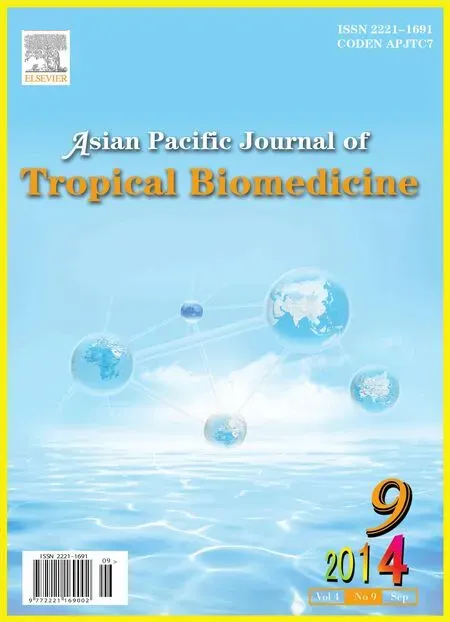Unprecedented scale Ebola epidemic in Guinea: what we should know
Viroj Wiwanitkit
1Joseph Ayobabalola University, Nigeria
2Faculty of Medicine, University of Nis, Serbia
3Hainan Medical University, China
4Surin Rajabhat University, Surin, Thailand
Unprecedented scale Ebola epidemic in Guinea: what we should know
Viroj Wiwanitkit1,2,3,4*
1Joseph Ayobabalola University, Nigeria
2Faculty of Medicine, University of Nis, Serbia
3Hainan Medical University, China
4Surin Rajabhat University, Surin, Thailand
To the editor
The present problematic outbreak in Africa is the Ebola virus infection among local population in the capital of Guinea. It becomes a great concern since the present outbreak (March to April 2014) is considered to be the biggest outbreak, the first discovery of this viral infection[1]. A high death rate can be seen. Severe diarrhea and bleeding can be seen in almost all cases and death rate is very high (about 75%). Focusing on the present outbreak, there are many considerations on this situation. First, this outbreak occurs in urban area insead of a remote rural area, which is a warning sign for the seriousness and pandemic. The contamination of the disease from the remote limited foci to the big city can imply the chance of wide spreading. In fact, the disease is confirmed to spread out of Guinea to the nearby countries. Second, although there are many new datas on the pathogenesis of Ebola, which better than its first appearance, the diagnosis and treatment of the infection is still unsuccessful. Some recent reports mentioned new biomarkers to help with the diagnosis of Ebola but those biomarkers are still far from reality[2]. Third, until present, although there are several ongoing developments for Ebola vaccine, there is still no available vaccine for fighting the infection. The disease control during the outbreak becomes an extremely difficulty in public health. At present, the necessary things for the public health workers around the world include a) gathering basic knowledge and updating the situation of Ebola outbreaks, b) planning for preventive actions for possible cross border infection and infection carried by travelers from Africa, c) setting for an international collaboration or network to trace the spreading path of the infection and performing research and development to find effective diagnostic, therapeutic and preventive tools for Ebola.
Conflict of interest statement
I declare that I have no conflict of interest.
[1] Gulland A. Ebola outbreak claims more than 60 lives. BMJ 2014; 348: g2473.
[2] Gulland A. Fear spreads as number of Ebola cases in Guinea rises. BMJ 2014; 348: g2644.
[3] Toit AD. Ebola virus in West Africa. Nat Rev Microbiol 2014; 12(5): 312.
[4] Baize S, Pannetier D, Oestereich L, Rieger T, Koivogui L, Magassouba N, et al. Emergence of Zaire Ebola virus disease in Guinea-preliminary report. N Engl J Med 2014; doi: 10.1056/ NEJMoa1404505.
[5] McElroy AK, Erickson BR, Flietstra TD, Rollin PE, Nichol ST, Towner JS, et al. Ebola hemorrhagic fever: novel biomarker correlates of clinical outcome. J Infect Dis 2014; doi: 10.1093/ infdis/jiu088.
[6] Marzi A, Feldmann H. Ebola virus vaccines: an overview of current approaches. Expert Rev Vaccines 2014; 13(4): 521-531.
10.12980/APJTB.4.201414B138
*Corresponding author: Professor Viroj Wiwanitkit, Wiwanitkit House, Bangkhae, Bangkok 10160, Thailand.
E-mail: wviroj@yahoo.com
Article history:
Received 3 Apr 2014
Received in revised form 15 Apr 2014
Accepted 3 May 2014
Available online 28 Jun 2014
 Asian Pacific Journal of Tropical Biomedicine2014年9期
Asian Pacific Journal of Tropical Biomedicine2014年9期
- Asian Pacific Journal of Tropical Biomedicine的其它文章
- Ebola in West Africa: an international medical emergency
